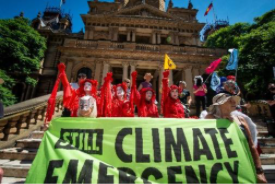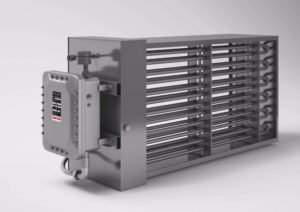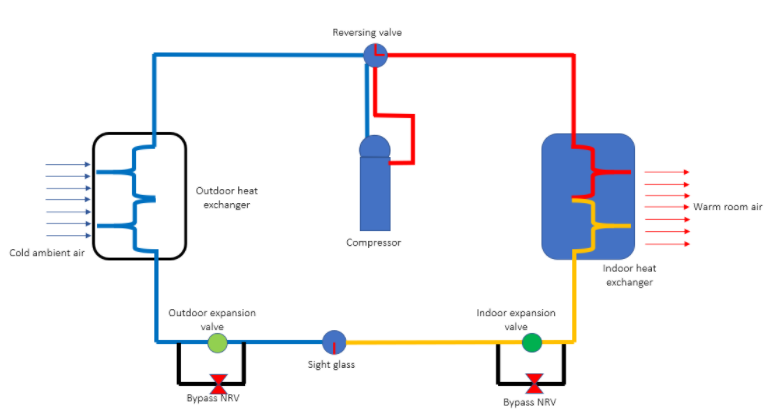Natural Gas Boiler – Is the end Near?
Phasing Out of Natural Gas Boilers
 The world is transitioning towards a low carbon economy to combat the effects of greenhouse gas emissions and global warming. Governments around the world are taking action. For instance, the United Kingdom is enacting legislation to ban the use of indoor household natural gas boilers. The UK plans to ban natural gas heaters from new-built houses by 2025 as a larger effort to combat climate changes.
The world is transitioning towards a low carbon economy to combat the effects of greenhouse gas emissions and global warming. Governments around the world are taking action. For instance, the United Kingdom is enacting legislation to ban the use of indoor household natural gas boilers. The UK plans to ban natural gas heaters from new-built houses by 2025 as a larger effort to combat climate changes.
In some countries, like Canada, 45 percent of emissions are from power generation for heating or electricity. This surpasses the emissions from the transportation sector. While the forced air furnaces and steam or hot water furnaces make up most main heating systems around Canada, their primary source of energy is fossil fuels. It is natural for the developed nations who are also climate action champions to take actions to tackle climate actions.
Alternative Heating Options
The biggest impacts come from not just reducing emissions in the household, but taking action in the industrial sector to achieve net zero emission goals. Two of the best alternatives to natural gas boiler heating are heat pumps and electric immersion heaters. Both methods have their own strengths and weakness and will be discussed in this article.
Electric Immersion Heaters-An Alternative to Fossil Fuel Boilers
 Electric immersion heaters are the simplest alternative for both hot water and steam boiler heaters. They are ideal for all major industries from power generation to comfort heating.
Electric immersion heaters are the simplest alternative for both hot water and steam boiler heaters. They are ideal for all major industries from power generation to comfort heating.
Immersion heaters can be installed as baseboard heaters, electric radiant floors, or forced-air electric furnaces.
With the right power source, electric industrial heaters can achieve net-zero emissions. In addition to traditional power sources, they are compatible with solar panels and innovative solutions like Tesla Solar roofs.
Heat Pumps – A Reliable Solution to Space heating and Cooling
Heat pumps operating in a space heating model absorb the heat from a low-temperature reservoir which can be either from the air (air sourced) or from the ground (ground sourced). They then provide heat to space or hot water. Like the electric immersion heaters, they are only a zero-carbon option if connected to a zero-carbon power source. Fortunately, they can connect with a solar grid to become an effective zero-carbon heating option. A few provisions are required for their effective functioning
- A well-insulated home or industrial space.
- Underfloor heating
- Oversized radiators and a heat pump system with slightly higher than needed specifications.
How Do heat pumps work?
The efficiency of heat pumps makes them an ideal alternative to natural gas furnaces. The main parts of the heat pump include:
- Indoor heat exchanger
- Outdoor heat exchanger
- Reversing valve
- Compressor
- Expansion valves usually 2 are required.
- Filter drier
- Controller
Most of the heat pumps can provide space cooling and heating options thanks to the reversing valve. In heating mode, the refrigerant is compressed in the compressor and leaves as a high-pressure high-temperature superheated vapor into the reversing valve. The reversing valves (since now operating in heating mode) will direct the refrigerant to the indoor unit heat exchanger. The forced draft of air will be passed through the indoor heat exchanger thus taking some of that heat away into the space you want to be heated.
Indoor Heat Exchanger
The indoor heat exchanger acts as a condenser and the refrigerant condenses after losing that heat to the space. The high pressure and slightly cool refrigerant bypasses the indoor expansion valve and passes through a non-return valve. It then passes through an outdoor expansion valve where the refrigerant expands and turns to low-pressure low-temperature vapor/liquid mixture.
At this stage, the refrigerant is at a much lower temperature compared to the ambient air. Refrigerants have low boiling points (ex. R134A has a boiling point of -26.3˚C and R410A -48.5 ˚C) so it is quite easy for the refrigerant to extract thermal energy from the ambient air even at lower temperatures. It passes through the outdoor heat exchanger where a forced draft of air in the refrigerant to absorb the ambient heat turns into a low-temperature low-pressure superheated vapor and enters the reversing valve where the reversing valve directs it to the compressor and the whole cycle repeats.
Heat Pump in Cooling Mode
In the cooling mode, the reversing valve directs the high-temperature high-pressure superheated vapor to the outdoor heat exchanger rather than the indoor heat exchanger. The ambient air is a lower temperature than the superheated vapor and takes some energy away. It leaves the condenser as a high pressure and slightly cooler liquid, bypasses the outdoor expansion valves and passes through the indoor expansion valve. It changes to a low-pressure and low-temperature liquid/vapor mixture. A forced draft of air is blown onto the indoor heat exchanger thus taking some of the energy away from the indoor space thus reducing the temperature of indoor space.
Air Source or Ground Source Heat Pump
An air source heat pump is more economically viable and takes heat from the air as described in the above example. It is compact, easily accessible thus reducing maintenance cost and provides the ability to retrofit in older household spaces. However, the ground source heat pump is more viable for bigger industrial spaces and greenfield expansions. The ground source heat pump collects the heat through the network of underground pipes either laid in a vertical manner requiring space for drilling equipment or in the horizontal manner requiring a fair bit of space. The aim is to extract heat from the ground which does not get as cold as the ambient air thus improving the process efficiency.
Another process is the wood-fueled heating systems where the fuel is based on burning wooden pallets, chips and logs, or biomass fuel. However, these have not gained as much recognition as the air or ground-sourced heat pumps.
Electric Boiler Heater Alternatives
Wattco custom manufactures electric immersion heaters for boiler systems and all major industrial applications. Our heating systems are well-equipped for changing standards of environmental responsibility with excellent compatibility in batteries and renewable power sources.
Our engineers work with you and your budget to select the best heater system, settings, and components for your projects. Contact us today for electric boiler heater quotes and information.

